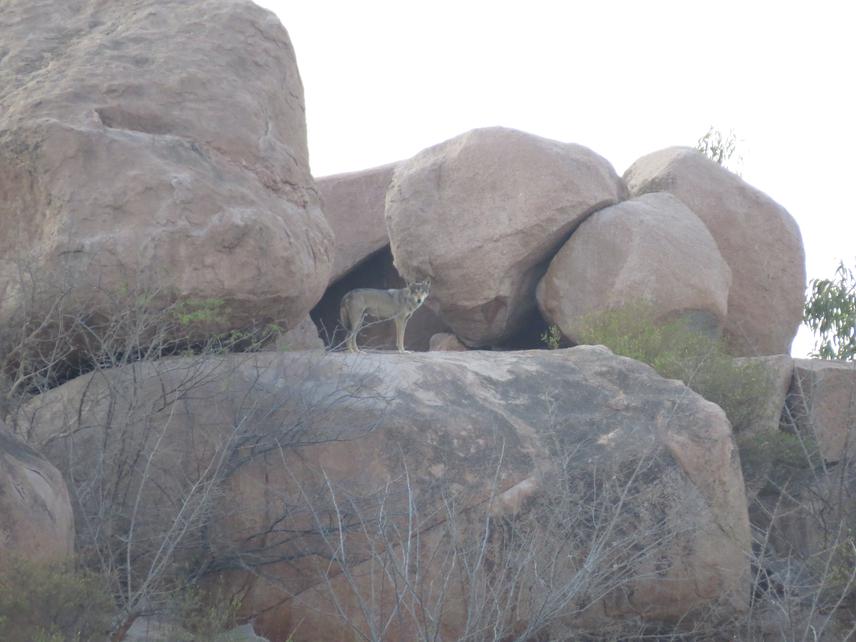Iravatee Majgaonkar
Other projects
10 Jul 2017
An Assessment of Interactions between Large Carnivores and Humans in Fragmented Rocky Habitats in North Karnataka, India
30 May 2022
Understanding Pastoralist Dependence on Biodiverse Savanna Ecosystems: Exploring a Land Sharing Framework for Conservation
The Indian wolf Canis lupus pallipes is a protected species whose wide home ranges often overlap with human use landscapes. In this study we will be ( i ) using information from local pastoralists and the forest department to assess distribution of wolves in 5 districts of western Maharashtra. ( ii ) assessing how pastoral communities respond to the presence of wolves in terms of attitudes, traditional methods of protecting livestock, and losses to predators in comparison to other reasons. The results of this study will direct us to recommend approaches to wolf conservation in
these landscapes.

Indian Grey Wolf.
The dryland stretches of western Maharashtra host an interactive system involving the resident and migratory shepherd communities, large number of livestock and carnivores like wolves.In the face of changing land use, livelihoods and tolerance exhibited towards wildlife outside protected areas, it will be useful to understand the current nature of interaction between humans and such carnivores. This is likely to develop a more informed approach for wolf conservation as well as for the ecological security necessary for local livelihoods to sustain.
To address our objectives,we will collate information on wolf sightings available with the forest department in 5 districts of western Maharashtra. This will help us determine the pattern of wolf occurrence especially outside protected areas. Similarly, we will be obtaining information on its denning which is known to happen in human-use landscapes and this information will be passed on to the managers. Furthermore, we will be obtain information on important groups of people who depend on these grasslands for their livelihoods, namely the shepherds, and try to understand how such local communities perceive wolves and respond to their presence with respect to reliance on compensation schemes, methods of protection to avoid livestock loss and the role of culture in their perception. The outcomes of these efforts,we hope,will be useful in assessing bow important this ecosystem is for their sustenance and this information will be passed on to the forest department who manage these areas and also happen to be a major collaborator on this project. Also,we aim to conduct this study to highlight the value of landscapes consisting of scrub fields and grasslands, which arc otherwise considered u n productive but in reality provision a system of pastoralists and their livestock.
This work is going to be carried out as a collaborative effort with the state forest department and a team of the research organisation of Tata Institute of Social Sciences and the NGO Anthra who are concerned with understanding issues faced by pastoral communities and matters of livestock health respectively.This will make it possible for us to build well informed solutions for issues arising out of human-wildlife interactions.